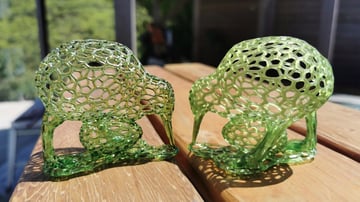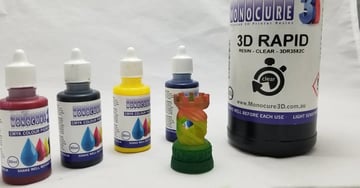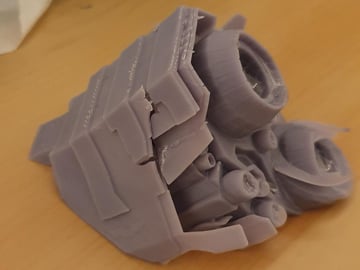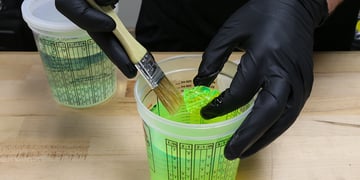Food coloring in Resin? All you need to know!
Everything about Resin

To some extent, these procedures are equivalent with merged deposition modeling (FDM) 3D printing, as a part is still created layer by layer. With resin 3D printing, the build plate is gradually raised away from the vat of resin as each layer is cured, rather than layers being extruded on top of each other.
Resin can be bought in a variety of colors, but as with anything, makers have actually begun to experiment with other methods of coloring, consisting of utilizing dyes planned for food. But don't be tricked: Even if you can include food coloring to it, resin is still toxic! When handling or printing with resin, we advise using security goggles and nitrile gloves, and always work in a well-ventilated location.
How To Dye With Resin

3D printing resin is typically already colored by the manufacturer in its own series of colors. If you wish to customize your own, the process is similar to that of coloring resins for other purposes-- essentially, you mix in the dye! It's advised to use a clear resin when aiming for a transparent finish, and white resin for an opaque result.
To change the color of the resin, prior to printing, you add drops of color or pigment to the resin to accomplish the desired color. It's important to do this in a cup or another plastic container, so you can guarantee it's effectively blended before pouring it into the printer's vat.
As pictured above, it's possible to alter colors in a single print. A steady color modification is achievable by periodically adding more or various dye to the resin vat, though the failure to mix in the color can result in patchy or streaky outcomes. You can change colors mid-print by stopping briefly the print and changing the resin in the vat with a new color.
For best results, a color chart and sub-milligram scales are advised. Keep extensive records of what you've done for repeatable and precise colors.
Keep in mind that, depending on the maker and kind of color you add, there's a possibility that you could be voiding your maker's service warranty. Be sure to double-check prior to trying anything out of the ordinary!
Playing with Food Coloring

First thing's first, for finest outcomes you should be utilizing a powdered pigment or a liquid dye designed for UV resin. 3DJake, for example, offers resin dyes in a variety of colors so you can develop any color you like, though it's crucial to keep in mind that their base color mix is planned for usage with DLP or LCD printers.
Otherwise, it's possible to utilize food coloring that's either powdered or oil-based, as these will work basically the like those created for UV resin. Examples include pigments used to give color to chocolate or candy. The reason these specific food dyes are oil-based is to maintain appropriate consistency and blend well with the confectionary.
The issue with the majority of supermarket-bought food coloring is that it's water-based, and resin is not. Keeping your base materials the very same is very important, as one of the problems with utilizing water-based dyes is that they may not blend well. This might lead to streaky color at a minimum, or perhaps failed prints!
An additional problem with using water or solvent-based dyes is what might take place in the future. As described by Monocure3D Pro Tips on YouTube, these kinds of dyes can vaporize with time and crack the resin, ruining the print.
Follow the tips to get the most out of your colored prints and prevent typical mistakes:

Make sure to follow correct safety preventative measures when working with resin. It isn't as easy to use as filament, so you do need to be cautious.
Be sure to utilize dyes that work with your chosen resin. Numerous brand names use line of product particularly to develop custom-made color resins. These ought to provide you the best results as they'll have a base resin and colorants created to deal with each other.
Do not utilize water- or solvent-based dyes as you run the risk of the finished print splitting gradually, ruining the design.
When blending resin, using a plain wood popsicle stick is fine. The important thing is that you don't use something where fibers or other particles might be left in the resin, such as a poor quality paintbrush.
Post-processing in an IPA bath is still an ideal technique and ought to not trigger the color to leech or fade.
